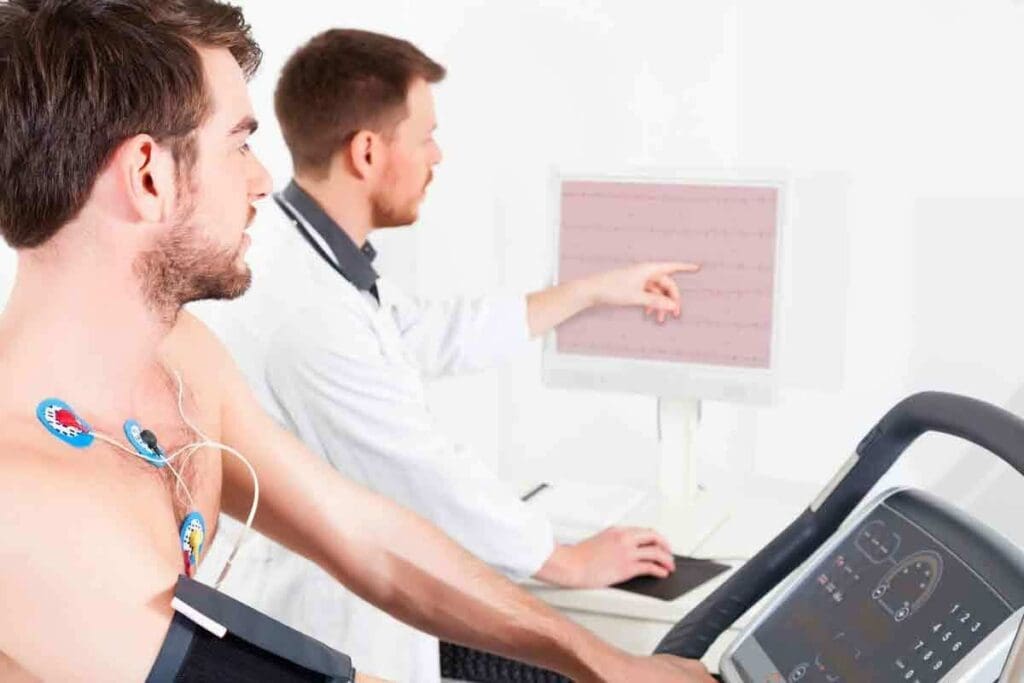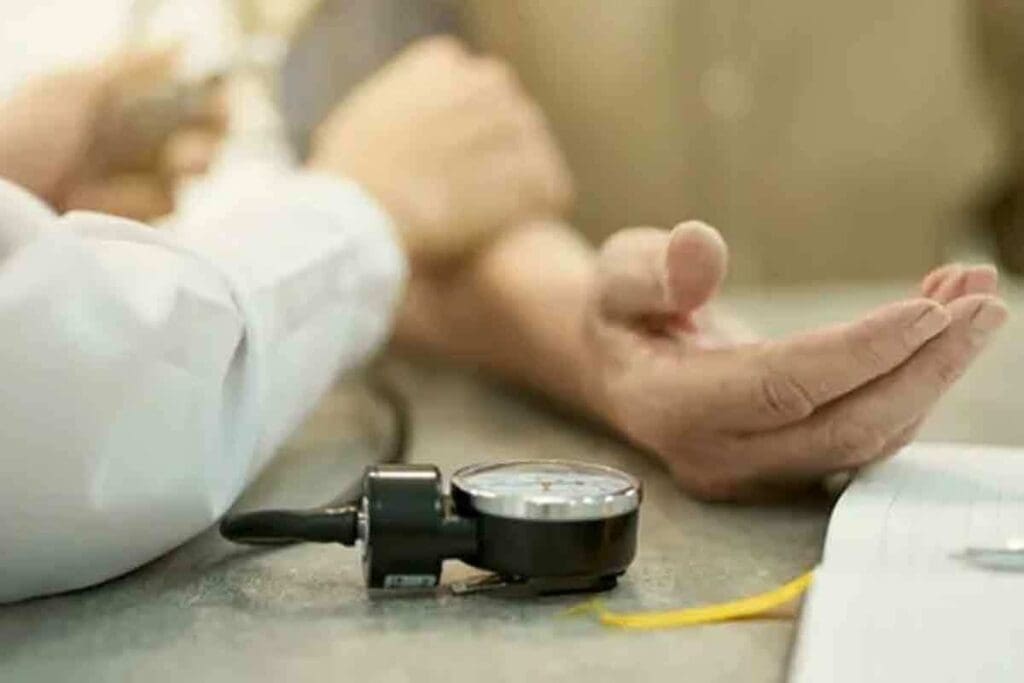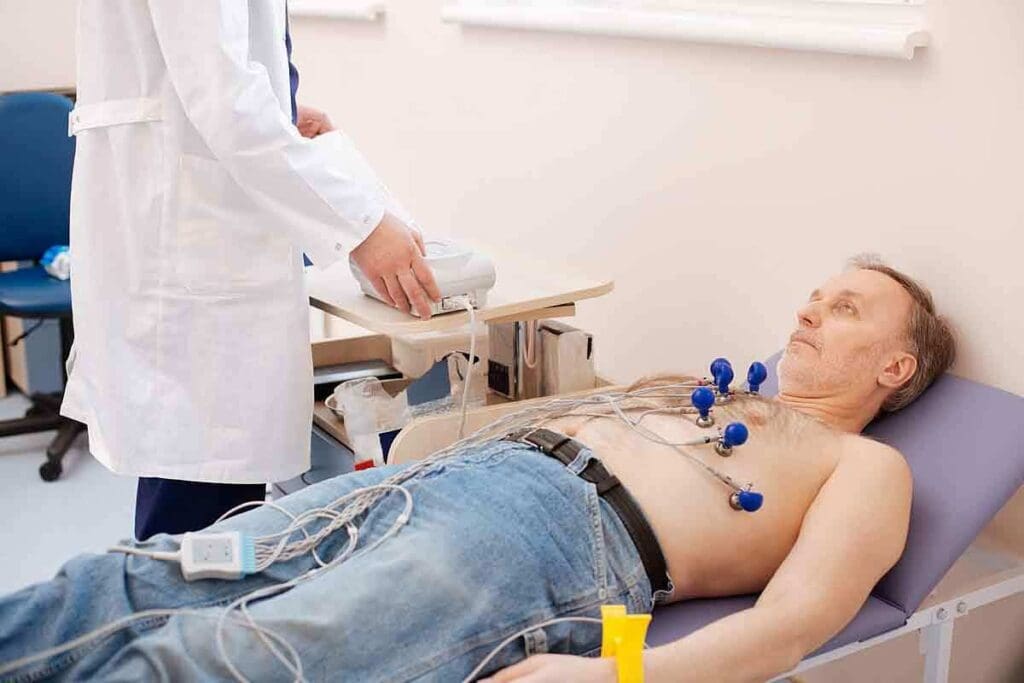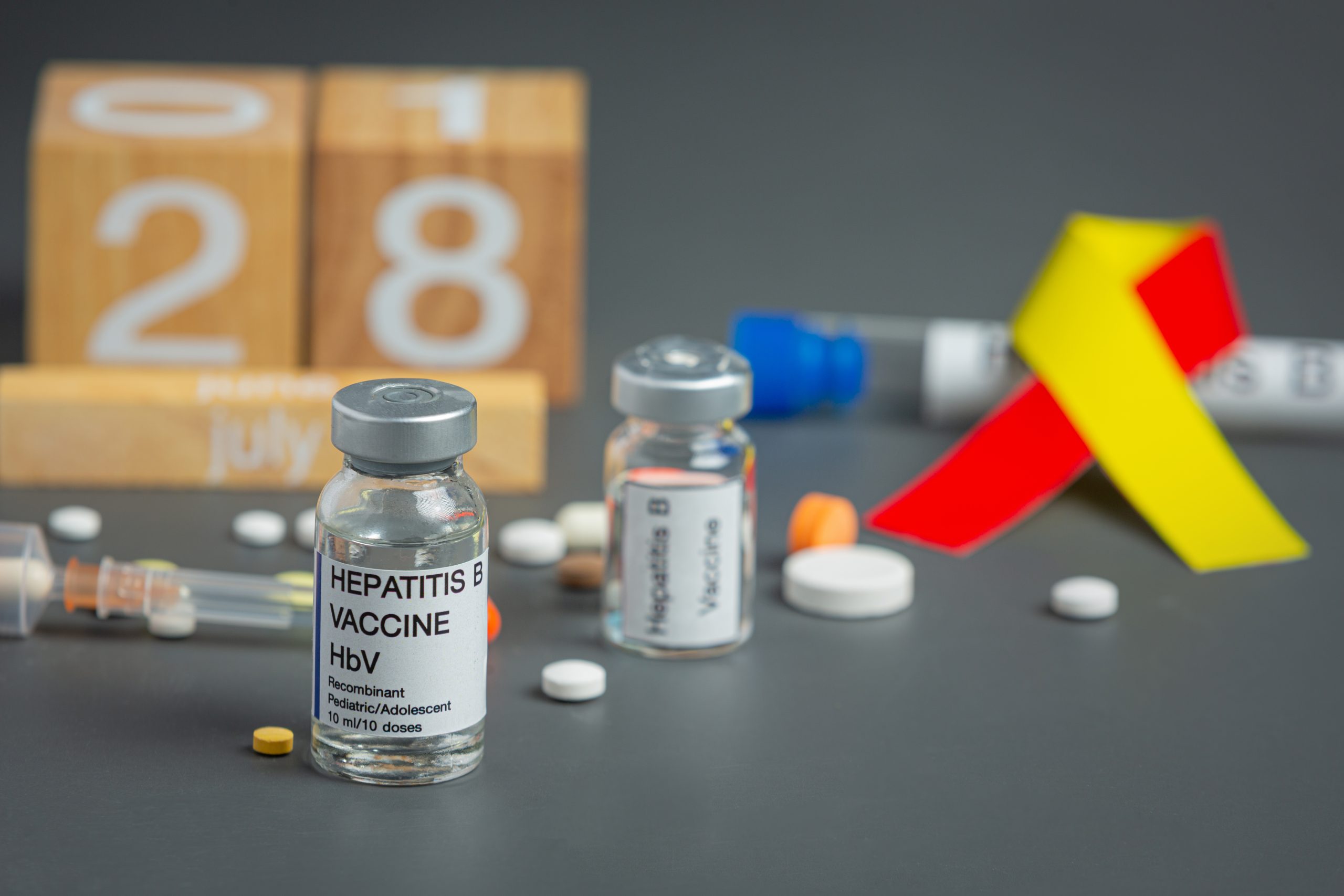Last Updated on November 27, 2025 by Bilal Hasdemir

At LivHospital, we know how vital it is to check heart health accurately. The sestamibi scan heart test, also known as the M1b1 scan, is key for checking coronary artery disease and how well the heart gets blood.
We’ll share 7 important facts about this essential heart stress test. This will help you grasp its role in heart care. We aim to give you all the details about the MIBI cardiology test, its steps, and its part in spotting heart disease.
Key Takeaways
- Understanding the purpose and benefits of the M1b1 scan
- Learning about the procedure and what to expect during the test
- Gaining insights into the significance of the test results
- Discovering how the test helps in assessing coronary artery disease
- Understanding the role of the test in cardiac care
What Is an M1b1 Scan and How Does It Work?

The M1b1 scan, also known as a Sestamibi scan, is a key tool for checking heart health. It shows how blood flows to the heart muscle. This test is vital for spotting and treating heart disease and other heart issues.
This scan uses a special compound called technetium-99m sestamibi. It helps make clear images of the heart. Technetium-99m sestamibi is taken up by the heart muscle, showing how well blood flows.
The Science Behind Sestamibi as a Radiotracer
The M1b1 scan’s success comes from technetium-99m sestamibi. When injected, it goes to the heart muscle and emits gamma rays. A gamma camera picks up these rays, creating images that show the heart’s blood flow and function.
- The radiotracer is injected at peak stress, either during physical exercise or pharmacologically induced stress.
- Images are taken shortly after injection to assess blood flow to the heart muscle under stress.
- A second set of images may be taken at rest to compare blood flow differences between stress and rest conditions.
Understanding MIBI Medical Abbreviation
The term MIBI stands for methoxyisobutylisonitrile, another name for sestamibi. In cardiac imaging, MIBI and sestamibi are often used in the same way. Knowing this helps patients and doctors talk clearly about tests and results.
In short, the M1b1 scan is a powerful tool for heart health. It uses nuclear medicine to give insights into the heart. By knowing how it works and the role of sestamibi, patients can understand its importance in heart care.
Key Fact #1: The Purpose of Sestamibi Cardiac Stress Testing

The main goal of a sestamibi scan is to check how well the heart works under stress. This test is non-invasive and key to diagnosing and treating heart disease.
Sestamibi cardiac stress testing finds coronary artery disease and checks myocardial perfusion. It compares heart images at rest and under stress. This helps doctors spot areas with less blood flow, showing possible blockages or damage.
Detecting Coronary Artery Disease
Coronary artery disease happens when the heart’s arteries narrow or block. The sestamibi stress test spots these issues by showing areas with poor blood flow under stress.
Evaluating Myocardial Perfusion
Myocardial perfusion imaging with sestamibi lets doctors see how blood flows to the heart muscle. This is vital for spotting ischemia and checking heart tissue health.
Knowing the purpose and benefits of sestamibi cardiac stress testing helps patients understand its role in heart health management.
Key Fact #2: Different Types of M1b1 Scans
It’s important to know about the different M1b1 scans for heart stress testing. The M1b1 scan, also known as the Sestamibi scan, uses various stress testing methods. These methods help check how well the heart works under stress.
Exercise Sestamibi Stress Test Protocol
An exercise Sestamibi stress test uses physical activity, like walking on a treadmill, to stress the heart. A small amount of radioactive tracer (sestamibi) is injected into the bloodstream. This tracer helps show how well the heart muscle works under stress.
The steps for an exercise Sestamibi stress test are:
- Preparation: Patients are asked to avoid eating or drinking certain substances before the test.
- Exercise: The patient walks on a treadmill, with the intensity gradually increased.
- Tracer Injection: The sestamibi tracer is injected at the peak of exercise.
- Imaging: After the test, images of the heart are taken to assess blood flow and function.
Pharmacological Sestamibi Stress Testing
For those who can’t exercise, pharmacological sestamibi stress testing is an option. This method uses medication to stress the heart, like exercise does.
The main parts of pharmacological stress testing are:
- Medication Administration: A drug that mimics exercise’s effects on the heart is given.
- Tracer Injection: Similar to the exercise test, the sestamibi tracer is injected during the pharmacological stress.
- Imaging: Subsequent imaging captures how the heart responds to the stress induced by the medication.
Both exercise and pharmacological stress tests give important information about heart function. They help find coronary artery disease. The choice depends on the patient’s health and ability to exercise.
Key Fact #3: The Complete M1b1 Scan Procedure
The M1b1 scan procedure has several key stages, from start to finish. Knowing each step can help reduce anxiety and make the experience smoother.
Before the Test: Preparation Guidelines
Getting ready for the M1b1 scan is key to success. Here are some important tips:
- Avoid caffeine for at least 24 hours before the test.
- Wear comfy clothes and avoid metal jewelry or clothes.
- Tell your doctor about any meds you’re taking, like for diabetes or heart issues.
- Fast for 4-6 hours before, but you can drink water.
During the Test: What Happens Step by Step
The M1b1 scan has several steps:
- Injection of the Radiotracer: A small amount of Technetium-99m sestamibi is injected into your blood.
- Stress Test: You’ll either walk on a treadmill or get a heart-stressing medication.
- Imaging: After the stress test, you’ll lie down, and a gamma camera will take heart images.
- Resting Images: A second set of images might be taken at rest, usually on a different day.
After the Test: Recovery and Follow-up
After the test, you can usually go back to normal activities. Some may feel minor side effects, like soreness or a metallic taste, but these usually go away fast.
Your doctor will set up a follow-up to talk about your results. It’s vital to follow up to understand your diagnosis and what to do next.
Key Fact #4: Safety Profile and Radiation Exposure
Knowing about the safety of the M1b1 scan can ease worries for both patients and doctors. The M1b1 scan uses a small amount of radiation. This is because it uses technetium-99m as a radiotracer.
Understanding the Risks of Technetium-99m
Technetium-99m is a radioactive tracer in the M1b1 scan. It helps see how the heart works and looks. Even though it’s mostly safe, there are some risks from radiation.
The amount of radiation from an M1b1 scan is low. It’s similar to or a bit more than a standard chest CT scan.
Radiation Exposure Comparison
| Diagnostic Test | Typical Effective Dose (mSv) |
| M1b1 Scan | 9-11 |
| Chest CT Scan | 7-10 |
| Annual Background Radiation | 3 |
The benefits of the M1b1 scan usually outweigh the risks of radiation. But it’s important for patients to talk about their own risks with their doctor.
Who Should Avoid Sestamibi Testing
Most patients can safely get an M1b1 scan. But some should be careful or avoid it. Pregnant or breastfeeding women should not get it because of radiation risks. Also, those allergic to the radiotracer should tell their doctor.
People with severe kidney or liver disease need extra care. The radiotracer goes through these organs. It’s key for patients to share their full medical history before the scan.
Key Fact #5: Interpreting Sestamibi Scan Results
Getting accurate results from a sestamibi scan is vital for diagnosing heart disease. Understanding your scan results is a big step in your health journey.
Normal vs. Abnormal Findings
A normal scan means your heart gets enough blood flow, both when you’re resting and under stress. But an abnormal scan might show that some heart areas don’t get enough blood. This could mean you have heart disease or another heart issue.
Abnormal scans can show different things, like:
- Reversible ischemia: This means blood flow to the heart is low when stressed, but gets better when resting.
- Fixed defects: These show scar tissue or infarction where blood flow is always low.
- Reverse redistribution: This might mean blood flow is normal when resting, but drops when stressed.
What Your Doctor Looks For in the Images
Your doctor will look closely at the scan images for any signs of low blood flow or defects. They’ll check how big and serious these problems are and where they are in your heart.
Your doctor will also think about your medical history, symptoms, and other test results. This helps them fully understand your scan results.
Timeframe for Receiving Results
How long it takes to get your scan results can vary. It usually takes a few hours to a few days after the test.
Talking to your doctor about your results is key. They can explain what it means for your heart health and what to do next.
Key Fact #6: Advantages of M1b1 Scans Over Other Cardiac Tests
The M1b1 scan is a key tool for diagnosing heart issues. It gives detailed information on how well the heart’s blood flow and function are. This is vital for spotting and treating heart disease.
Comparison with Stress Echocardiograms
Stress echocardiograms check heart function under stress. But M1b1 scans have some key benefits. They don’t rely as much on the person doing the test and work better in tricky cases.
A study in the Journal of Nuclear Cardiology found M1b1 scans are better at finding heart disease than stress echocardiograms.
M1b1 scans also give exact numbers on blood flow to the heart. This helps doctors see clearly if there’s a problem. It’s super helpful for people with heart disease.
Comparison with Cardiac Catheterization
Cardiac catheterization is a detailed but risky test for the heart arteries. M1b1 scans are safer and can help decide who needs this test. They’re a non-invasive way to check the heart’s health.
As “a non-invasive test that can accurately assess myocardial perfusion and viability”, M1b1 scans cut down on risky tests. This makes patients happier and saves money, too.
Benefits for Specific Patient Populations
M1b1 scans are great for some patients. They can test people who can’t do exercise tests. They also help keep an eye on heart health in those with heart disease.
In short, M1b1 scans beat other tests for heart health. They give detailed info on blood flow and function. This makes them a top choice for diagnosing and treating heart disease.
Key Fact #7: Limitations and Considerations
M1b1 scans are useful for diagnosing heart issues, but they have their limits. It’s important to know these limits to understand results and make the right decisions.
Potential False Positives and Negatives
M1b1 scans can sometimes show false positives or negatives. A false positive might say you have heart disease when you don’t. This could lead to extra tests or worry for you. On the other hand, a false negative might miss real heart disease, which could delay treatment.
Many things can cause these false results. These include things about you, technical problems during the scan, or other health issues. For example, breast tissue or chest wall problems can sometimes cause false positives.
When Additional Testing May Be Needed
If M1b1 scan results are unclear or show serious heart disease, more tests might be needed. This could include stress tests, cardiac catheterization, or imaging like CCTA.
Deciding on more tests depends on several things. These include your symptoms, medical history, and the M1b1 scan results. Our healthcare team works with you to find the best next steps for your health.
| Scenario | Potential Additional Testing | Rationale |
| Inconclusive M1b1 scan results | Stress echocardiography or CCTA | To clarify the presence or extent of coronary artery disease |
| Suspected significant coronary artery disease | Cardiac catheterization | To directly visualize the coronary arteries and assess blockages |
| Contradictory test results | Repeat M1b1 scan or alternative stress test | To resolve discrepancies and confirm the diagnosis |
Knowing the limits of M1b1 scans and when more tests are needed helps patients and doctors. Together, they can make sure you get the right diagnosis and treatment.
Common Medical Conditions Diagnosed with Sestamibi Tests
The Sestamibi scan is a key tool for diagnosing heart issues. It shows how well the heart’s blood flows and works. This helps doctors spot and treat heart diseases better.
Identifying Ischemia and Infarction
Ischemia happens when the heart doesn’t get enough oxygen-rich blood. This is often due to blocked arteries. Sestamibi scans spot ischemia by showing where blood flow is low during stress or exercise.
Infarction, or a heart attack, occurs when a blockage cuts off blood to the heart for too long. This damages or kills the heart muscle. Sestamibi tests find infarction by showing scar tissue or reduced function.
Early detection of ischemia and infarction is key to quick treatment. Sestamibi scans help doctors see how much damage there is. They then plan the best treatment to help patients.
Assessing Viable Heart Muscle
Sestamibi tests also check if the heart muscle can recover after damage. This is called viability. They see if the muscle is just sleeping due to low blood flow or if it’s too damaged to recover.
Doctors use this info to choose the best treatments. This could be surgery or medicine. Knowing about viable muscle helps tailor care for each patient.
Checking viable heart muscle makes Sestamibi scans even more useful. They help doctors create specific treatment plans for complex heart conditions.
Insurance Coverage and Cost Considerations
When looking into heart health tests, knowing about insurance for Sestamibi scans is key. Medical costs can be high, and sestamibi cardiac testing is no different.
Typical Costs of Sestamibi Cardiac Testing
The price of Sestamibi cardiac testing varies a lot. It depends on where you are, who you see, and what tests you need. Costs usually fall between $1,000 and $3,000 or more. It’s important to know these costs and whether your insurance will cover them.
Here’s a quick look at what sestamibi cardiac testing might cost:
| Service | Average Cost |
| Sestamibi Scan | $1,000 – $2,000 |
| Stress Test | $500 – $1,500 |
| Physician Fees | $200 – $500 |
| Total | $1,700 – $4,000 |
Insurance Preauthorization Requirements
Before getting a sestamibi cardiac test, you need to know about insurance preauthorization. This is when your doctor gets approval from your insurance before the test. It makes sure the test is needed and covered by insurance.
Steps to Ensure Coverage:
- Check with your insurance provider to understand their preauthorization requirements.
- Work with your healthcare provider to obtain the necessary preauthorization.
- Review your insurance policy to understand any out-of-pocket expenses you may incur.
Knowing the costs and insurance for Sestamibi cardiac testing helps you make better health choices. Always talk to your doctor and insurance to make sure everything goes smoothly.
Innovations in MIBI Cardiology Technology
MIBI cardiology technology is changing fast. It’s getting better at checking the heart more accurately and quickly. New imaging methods and tools are making diagnosis and care better for patients.
Advanced Imaging Techniques
One big change in MIBI cardiology is the new imaging methods. These include:
- High-Speed SPECT Imaging: It takes pictures faster and with better detail.
- Hybrid Imaging: It mixes SPECT with CT or MRI for more info.
- Attenuation Correction: It makes images clearer by fixing issues with tissue blocking the view.
These new ways of imaging are making MIBI scans better. Doctors can now make better choices for their patients.
Future Developments in Nuclear Cardiology
We’re expecting even more changes in nuclear cardiology soon. New tech and the need for better, more specific tests will drive these changes. Some things we might see include:
- Integration of Artificial Intelligence (AI): AI will help doctors analyze images better and faster.
- New Radiotracers: New substances that help doctors see the heart better will be developed.
- Personalized Medicine: Care will be tailored to each patient’s needs.
These advancements will make MIBI cardiology even more important in heart care. Doctors will be able to give better, more focused care to their patients.
Conclusion: The Value of M1b1 Scans in Modern Cardiac Care
M1b1 scans play a key role in diagnosing and managing heart conditions. They help detect coronary artery disease and assess how well the heart gets blood. This information guides treatment, improving patient care.
M1b1 scans are vital in cardiology. They offer a safe and non-invasive way to check heart function. Knowing how M1b1 scans work helps doctors make better decisions for their patients.
The role of M1b1 scans in heart care is huge. As cardiology advances, M1b1 scans will keep being a key part of patient care. They help doctors provide top-notch, personalized treatment.
FAQ
What is a sestamibi scan, and how does it work?
A sestamibi scan, also known as an M1b1 scan, uses a special dye to see how blood flows to the heart. It helps find problems with the heart’s blood flow and check how well the heart works.
What is the purpose of a sestamibi cardiac stress test?
A sestamibi cardiac stress test looks for heart disease and checks how well the heart works. It compares images taken when the heart is at rest and when it’s stressed.
What are the different types of M1b1 scans?
There are two types of M1b1 scans. One uses exercise to stress the heart, and the other uses medicine. Both help find heart problems.
How do I prepare for an M1b1 scan?
To get ready for an M1b1 scan, you might need to eat certain foods and manage your medicines. Your doctor will tell you what to do.
What happens during an M1b1 scan?
During an M1b1 scan, a special dye is given through an IV. Then, pictures are taken to see how the heart works under stress and at rest.
Is an M1b1 scan safe?
An M1b1 scan is mostly safe. It uses a small amount of radiation. Your doctor will talk about the risks and benefits with you.
How are Sestamibi scan results interpreted?
Doctors look at the stress and rest images to find heart problems. They check for areas that don’t get enough blood and see if the heart can recover.
How does an M1b1 scan compare to other cardiac diagnostic tests?
An M1b1 scan gives detailed information on heart blood flow and health. It’s very useful, even for people who can’t do exercise tests.
What are the limitations of M1b1 scans?
M1b1 scans might not always be right. They can show false positives or negatives. More tests might be needed to confirm the results.
How much does a sestamibi cardiac test cost, and is it covered by insurance?
The cost of a sestamibi test varies. Insurance coverage also depends on your plan. It’s important to know what your insurance covers and what you might have to pay out of pocket.
What are the future developments in MIBI cardiology technology?
New technologies in MIBI cardiology are coming. They will make imaging better and help doctors diagnose and treat heart problems more accurately.
References
- Ezzat, M., & Gelfand, M. J. (2013). Surviving a stressful MIBI scan. Nuclear Medicine Communications. Retrieved from https://pubmed.ncbi.nlm.nih.gov/24176464/
- Vavere, A. L., Ghadimi, K., Lakkis, N. A., & Minoshima, S. (2006). Characteristics of patients with abnormal stress technetium Tc 99m sestamibi SPECT studies without significant coronary artery diameter stenoses. Journal of Nuclear Cardiology, 13(6), 773-781. https://www.ncbi.nlm.nih.gov/pmc/articles/PMC6654421/






